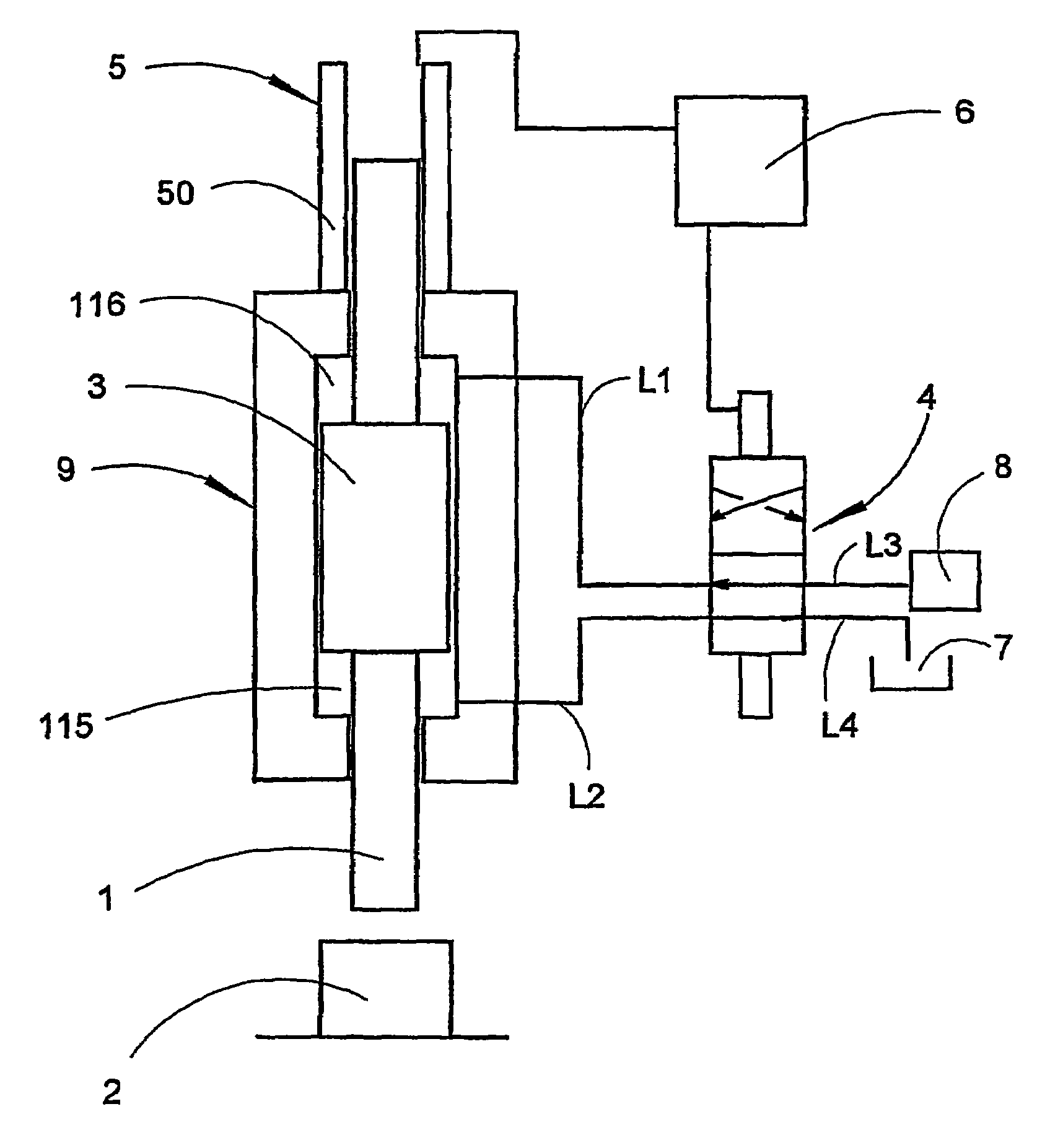Method employing high kinetic energy for working of material
a high-kinetic energy and material technology, applied in the direction of drilling machines and methods, forging hammers, presses, etc., can solve the problems of excessive tool wear and undesirable burrs, undesirable and in most cases distinctly harmful, and the disadvantage of subjecting the workpiece to be worked in a high-speed process to more than one impact, and achieve the effect of high kinetic energy
- Summary
- Abstract
- Description
- Claims
- Application Information
AI Technical Summary
Benefits of technology
Problems solved by technology
Method used
Image
Examples
Embodiment Construction
[0015]FIG. 1 shows a first preferred embodiment according to the invention. A hydraulic piston / cylinder unit 9 is shown, with a hydraulic piston 3 which is provided, at its lower end, with a stamp means 1. This stamp means 1 is intended to transfer high kinetic energy to a material body 2 (or tool) for high-speed working. The diagrammatic FIG. also shows that the piston / cylinder unit 9 is provided with a lower pressure: chamber 115 and an upper pressure chamber 116. The upper pressure chamber 116 is connected to a valve means 4 via a first line L1. The lower chamber 115 is connected to the same valve means 4 via a second line L2. On its other side, the valve means 4 is connected, via a third line L3, to a pressure source 8 and, via a fourth line L4, to a tank 7 (in most cases atmospheric pressure). In a first position (shown in FIG. 1), the valve means couples the pressure source 8 together with the first line L1 so that the upper chamber 116 is pressurized. At the same time, the lo...
PUM
| Property | Measurement | Unit |
|---|---|---|
| Force | aaaaa | aaaaa |
| Pressure | aaaaa | aaaaa |
| Time | aaaaa | aaaaa |
Abstract
Description
Claims
Application Information
 Login to View More
Login to View More - R&D
- Intellectual Property
- Life Sciences
- Materials
- Tech Scout
- Unparalleled Data Quality
- Higher Quality Content
- 60% Fewer Hallucinations
Browse by: Latest US Patents, China's latest patents, Technical Efficacy Thesaurus, Application Domain, Technology Topic, Popular Technical Reports.
© 2025 PatSnap. All rights reserved.Legal|Privacy policy|Modern Slavery Act Transparency Statement|Sitemap|About US| Contact US: help@patsnap.com



